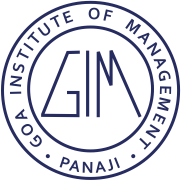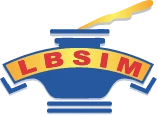MBA Aspirants are expected to know core Industry. This helps them to understand infrastructure base of India. Today, you will read on Indian cement industry
The cement industry is one of the core industries, which has an important role in the development of a country. Currently, the Indian cement industry is the second largest in the world, after China.
In 2010, India’s cement production stood at 300 million tonnes and this figure is expected to go beyond 550 million tonnes by 2020.
At present, there are 183 large and 365 mini cement plants in India, and these numbers are expected to grow in light of the increasing number of infrastructure activities and demand from the housing sector.
In India, 67% percent of the cement is channelled to housing projects, 13% to infrastructure projects, 11% to commercial construction projects, and 9% to projects related to industrial development.
The cement industry in India has evolved in clusters throughout the country because of dispersed locations of limestone reserves. At present, there are seven clusters in India – the Satna cluster in Madhya Pradesh; Chandrapur in the northern part of Andhra Pradesh and Maharashtra; Gulbarga in the northern part of Karnataka and eastern part of Andhra Pradesh; Chanderia in the southern part of Rajasthan, Jawad and Neemuch in Madhya Pradesh; Bilaspur in Chattisgarh; Yerraguntla in Andhra Pradesh; and Nalgonda in Andhra Pradesh.
According to RNCOS, a leading industry research and consultancy firm, the total installed capacity of cement in the country is expected to increase with a compound annual growth rate of 7% between 2012 and 2015. Some of the major domestic cement companies in India are UltraTech Cement, Ambuja Cement, JK Cement, Century Cement, ACC Cement, and Shree Cement.
Greater demand for cement in India and an increase in the number of construction projects have attracted foreign cement companies to India and these are Lafarge, Holcim, Italcementi, and HeidelbergCement. Holcim, of the largest cement companies in the world, has established and expanded its operations in India by buying a major stake in ACC Cement and Ambuja Cement. Collectively, these organisations have the largest market share in India – approximately 50% of the entire market size.
Last year, Holcim’s annual capacity stood at 57 million tonnes, higher than UltraTech Cement, whose capacity was marked at 52 million tonnes. In anticipation of more infrastructure projects in future, Holcim is planning to increase its capacity by investing Rp 1,800 crores in Ambuja Cement by the end of this year.
Experts claim that there is tremendous growth potential in the Indian cement industry because India’s per capita consumption of cement is much lower than the world average.
In 2011, India’s per capita consumption of cement stood at 150 kg whereas the world average was over 350 kg per capita. In comparison, China’s per capita consumption of cement stood at 660 kg and Japan’s per capita consumption of cement stood at 631 kg. In fact, it is because of India’s low per capita consumption of cement that foreign players are keen on investing in the country.
Demand for cement in India will be driven by a push from the residential sector. With an increase in per capita income of Indian citizens, rapid growth of nuclear families, rapid urbanisation, and greater government stimuli to affordable housing schemes, we can safely say that the Indian cement industry will continue to grow in the next decade.
Stay informed, Stay ahead and stay inspired with MBA Rendezvous






